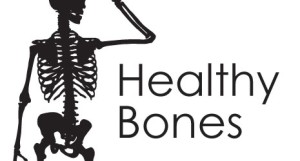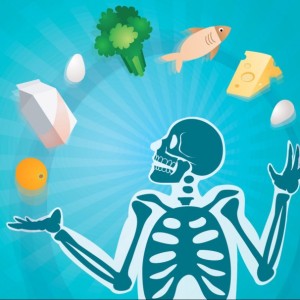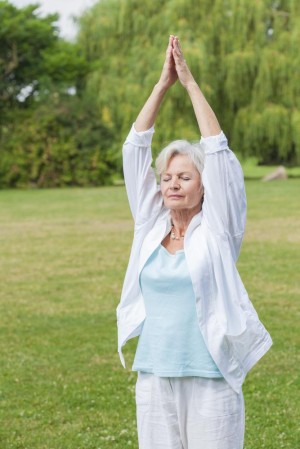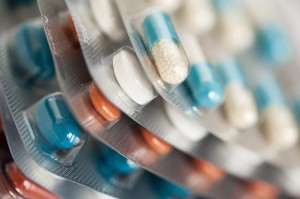Guest Post By Leslie Vandever

Good bone health is vital. Our bones protect our vital organs—the heart, lungs, liver, and brain. They provide the framework for the entire body, allowing us to move and live independently. But, say you’ve broken a bone. It might be your wrist, which cracked when you slipped on an icy patch and fell. Or maybe you broke your leg skiing, or your arm, or hip, or fingers or toes. Unfortunately, accidents do happen.
Bone is living tissue. When it breaks, cells from the blood flow into the injured area and start the process of turning into new bone. Healing time varies, depending on the severity of the injury, your general health, your sleep habits, hydration, and how much daily exercise you get.
Your diet can make an appreciable difference in your healing time, as well. Your body must have a steady supply of certain nutrients to build new bone, remodel injured bone, and maintain bone that already exists. You can choose to eat in a way that helps that process along.

Good bone health requires, first of all, a well-rounded, nutritious diet. A healthy one includes foods that are high in protein, like lean meat, chicken or fish (or beans and legumes, if you prefer), nuts and eggs, and an abundance of fresh vegetables and fruits of all kinds every day. Limit foods that are high in carbohydrates, like those made from refined white flour. Focus instead on whole-grain breads, pastas, and cereals. Stick to healthy, plant-based, unsaturated fats for cooking and eating, like olive or canola oil, and avoid sugary foods and beverages except as rare special treats.
Calcium is one of the most important minerals needed for bone health and healing. Other parts of the body need calcium, as well, and the bones act as calcium storehouses. Foods that are rich in calcium include: Milk, yogurt, cheese, almonds, broccoli, kale, collard greens, mustard greens and other green leafy vegetables, liver, beans & legumes, shrimp, canned salmon with bones, other saltwater fish, and calcium-fortified soy products.
When it comes to bones, however, you also need to get an adequate daily amount of vitamin D. Your gut can’t absorb the calcium you eat without this essential nutrient. One of the best ways to get enough vitamin D is to spend some time each day outside, in the sunshine. When the ultraviolet rays of the sun hit your skin, your body produces vitamin D endogenously, making it the only vitamin that we don’t necessarily have to get from the foods we eat. But be mindful about staying out in the sun for too long. Sunburn can cause skin cancer. Try not to spend more than 10 minutes at a time out in the sun, unprotected.
Although there are only a few foods that supply vitamin D in the diet, they do exist. They include: Cod liver oil, salmon, swordfish, tuna fish, sardines, liver, egg yolk, orange juice fortified with vitamin D, vitamin D-fortified milk (whole, skim, or non-fat), swiss cheese, fortified yogurt, and fortified cereals. You can also get vitamin D from supplements, either prescribed by your doctor or over-the-counter at the drugstore. Recommended dosage is between 400 mgs and 1,000 mgs daily. Take care, though: more than 2,000 mgs of vitamin D per day can be toxic.
Calcium and vitamin D are both essential for bone health throughout your life. Make sure you’re getting enough of both each and every day.
Leslie Vandever is a professional journalist and freelance writer with more than 25 years of experience. She lives in Northern California.
References:
Vitamin D. (2014, Nov. 10) National Institutes of Health. Retrieved on December 19, 2014 from http://ods.od.nih.gov/factsheets/VitaminD-HealthProfessional/
Bone Health for Life: Health Information Basics for You and Your Family. (2014, July) National Institute of Arthritis and Musculoskeletal and Skin Diseases. Retrieved on December 19, 2014 from http://www.niams.nih.gov/Health_Info/Bone/Bone_Health/bone_health_for_life.asp
Making Wise Choices in Each Food Group. (2014) U.S. Department of Veterans Affairs. Retrieved on December 19, 2014 from http://www.veteranshealthlibrary.org/Search/142,41395_VA
Bone Health: Tips to Keep Your Bones Healthy. (2013, Feb. 9) Mayo Clinic. Retrieved on December 19, 2014 from http://www.mayoclinic.org/healthy-living/adult-health/in-depth/bone-health/art-20045060


